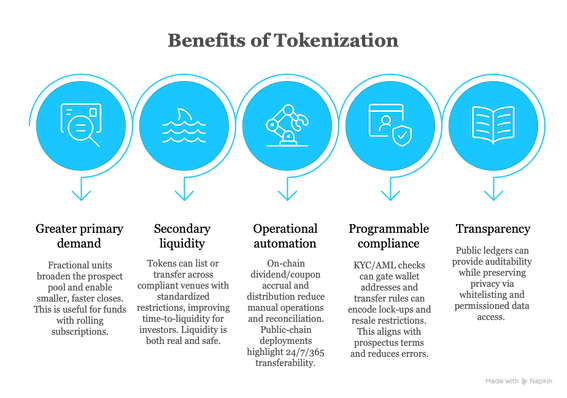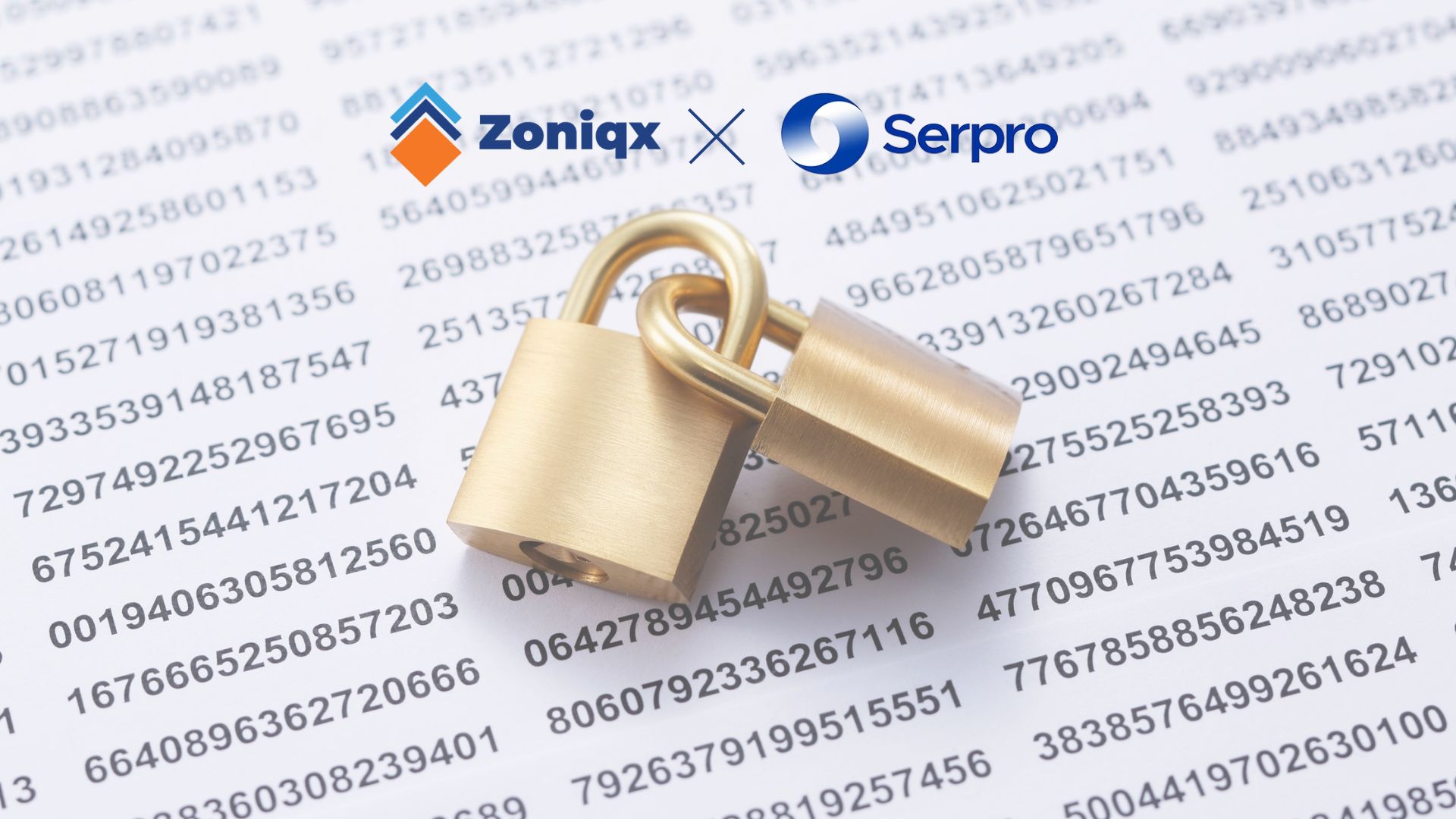Benefits of Fractional Ownership through Tokenization
1. What is Fractional Ownership and How Does Tokenization Make it Work?
Fractional ownership means multiple investors hold economic rights to a single asset through divisible units. Tokenization represents those units as programmable, transferable tokens on a distributed ledger. Smart contracts can encode cap tables, transfer restrictions, corporate actions, and cash-flow waterfalls, enabling on-chain compliance and automated operations. Authoritative definitions from central banks and standard-setters frame tokenization as a digital representation of real or financial assets with machine-readable logic.
Because tokens are natively digital, they can:
- Settle peer-to-peer (subject to regulation) with near-real-time finality.
- Embed compliance (KYC/AML, transfer restrictions) at the token level.
- Interoperate across venues and custody models as rails mature.
In fixed income and fund shares, current pilots show delivery-versus-payment (DvP) models, shared-ledger custody, and standardized workflows to mitigate operational risk.
2. Why Does Fractional Ownership Matter?
1. Liquidity Advantages
Historically, private assets suffer from long lockups and thin secondary markets. Tokenization helps by:
- Smaller tradable units. Dividing a large asset (e.g., a $100M property or pool of receivables) into thousands of tokens expands the buyer/seller base, enabling more frequent matches and narrower spreads over time.
- 24/7 transfers and automated flows. Tokenized funds like BlackRock’s BUIDL and Franklin Templeton’s OnChain U.S. Government Money Fund (BENJI) demonstrate near-continuous transferability and on-chain accrual/distribution of yield (subject to eligibility).
- Programmable market structure. As frameworks like Project Guardian (Singapore) formalize DvP and custody models, secondary trading and cross-border use cases can become more efficient and safer.
Data aggregators show rapid growth of tokenized Treasury and cash-equivalent markets (led by BUIDL), indicating real demand for on-chain liquidity with institutional issuers.
2. Investor Access (broader participation with guardrails)
Fractionalization reduces minimum tickets and opens private market exposure to more investor types (within regulatory categories). Notable examples:
- Hamilton Lane tokenized feeder funds in 2022–2023, broadening access to private credit and secondaries for qualified investors.
- Franklin Templeton’s BENJI token ties one token to one money-market share, with transfer and shareholder accounting tracked on-chain, making subscriptions/redemptions more seamless for eligible investors.
Public- and private-sector bodies (WEF, MAS, ICMA) emphasize tokenization’s potential to democratize access, while recognizing the need for consistent disclosures and suitability controls at the wallet/venue layer.
3. Operational Efficiency and Cost Reduction
Smart contracts can automate coupon/dividend accrual, NAV processing, and corporate actions, shrinking reconciliation loads across transfer agents, custodians, and venues. Policy research notes efficiency gains from common ledgers, provided legal records and risk controls are aligned.

3. What Are the Use Cases of Fractional Ownership with Tokenization?
1. Real Estate
Tokenization allows property ownership to be divided into digital shares, enabling investors to access high-value assets with smaller tickets. Zoniqx has helped real estate firms streamline issuance and investor onboarding, making fractional property investment more accessible and compliant.
2. Private Credit & Debt
Debt instruments can be broken into tokenized units, opening private credit markets to a wider investor pool. Zoniqx has supported issuers in structuring and deploying debt tokens with full KYC/AML integration, reducing friction for both institutional and individual investors.
3. Funds & Alternative Assets
By tokenizing fund units, investors can buy fractional interests in traditionally illiquid vehicles such as private equity or venture capital funds. Zoniqx has enabled asset managers to digitize feeder funds, automate compliance, and reduce minimum investment thresholds.
4. Art & Collectibles
High-value art and collectibles can be fractionally owned through token shares, democratizing access while ensuring provenance. Zoniqx has worked with platforms to issue compliant tokens, giving investors secure exposure to alternative assets without operational bottlenecks.
5. Treasuries & Money Market Instruments
Government securities and treasury products can be tokenized into tradable shares, offering liquidity and real-time settlement. With Zoniqx’s issuance and compliance layer, financial institutions have been able to extend tokenized treasury offerings to a wider investor base.
4. What Are the Benefits for Issuers and Investors?
1. Greater primary demand
Fractional units broaden the prospect pool and enable smaller, faster closes, useful for funds with rolling subscriptions or asset-backed issuers that fund in tranches.
2. Secondary liquidity
Tokens can list or transfer across compliant venues with standardized restrictions, improving time-to-liquidity for investors relative to traditional side-lettered private placements. Emerging frameworks (Project Guardian GFIF) focus on DvP and custody so that liquidity is both real and safe.
3. Operational automation
On-chain dividend/coupon accrual and distribution reduce manual operations and reconciliation. Public-chain deployments (e.g., BUIDL) highlight 24/7/365 transferability and on-chain accrual (with eligibility gating), pointing to lower lifecycle costs over time.
4. Programmable compliance
KYC/AML checks can gate wallet addresses; transfer rules can encode lock-ups and resale restrictions, aligning with prospectus terms and reducing errors and back-office overhead as standards mature.
5. Transparency
Public ledgers can provide auditability (holdings, flows, cap table states) while preserving privacy via whitelisting and permissioned data access. Policymakers note these features if legal records and operational resilience are addressed.
5. What Are the Risks and How is the Market Addressing Them?
Tokenization isn’t a cure-all. Authorities highlight liquidity/maturity mismatches, leverage, price-quality dispersion, and operational fragilities, especially across borders. Market participants should align disclosures, venue resiliency, and wallet controls with existing securities laws.
Regulators and industry bodies are converging on practical guardrails:
- Legal finality & record-keeping. BIS and central banks explore how token ledgers become sources of truth for ownership, critical for netting, collateral, and insolvency regimes.
- Standards for issuance, custody, and DvP. ICMA’s Guardian Fixed Income Framework and MAS pilots target consistent workflows that enable safe secondary activity.
- Interoperability. Case studies show that bridging/portability can reduce liquidity fragmentation, improving investor flexibility.
6. How to Evaluate a Fractional Ownership/Tokenization Platform?
When assessing partners and platforms for fractionalization, look for:
- Compliance-first architecture. Can the platform encode investor eligibility, resale restrictions, lock-ups, and disclosures in the token? (Regulatory alignment is non-negotiable.)
- Proven issuance + transfer agency. Does it support regulated fund/share classes (like BENJI and BUIDL) or private offerings with cap-table integrity?
- Distribution and secondary venues. Are there whitelisted venues or OTC workflows to translate fractionalization into actual tokenized assets liquidity? Check case studies from Hamilton Lane/Securitize and Guardian workstreams.
- Interoperability and custody choice. Can tokens interoperate across approved chains and custodians to avoid liquidity silos?
- Operational resilience. Evaluate uptime, incident response, private-key management, and reconciliation with legal books. Authorities stress these points for systemic safety.
7. Putting it All Together: The Business Case
For issuers, fractional ownership through tokenization can compress time-to-capital, lower operational costs, and expand the investor base, while supporting perpetual or rolling liquidity programs. For investors, it can provide smaller tickets, clearer exit options, and programmability (automated yield accrual, scheduled redemptions, or collateralization in approved venues). As more regulated issuers deploy tokenized share classes (BUIDL, BENJI) and as Project Guardian and industry frameworks mature, fractional ownership is shifting from proof-of-concept to production finance.
8. Frequently Asked Questions
1. Does fractional ownership change investor rights?
No. Rights come from the legal instrument (e.g., fund shares or securities). Tokens are the digital representation and transfer mechanism. Proper structuring ensures that on-chain records map to off-chain legal rights.
2. Is liquidity guaranteed?
No. Fractionalization enables liquidity; it doesn’t guarantee it. Real liquidity emerges with compliant venues, market-maker participation, and standardized settlement/custody.
3. What about risk?
Treat tokenized offerings like any security: assess disclosures, market structure, custody, and venue resiliency. Policymakers highlight liquidity and operational risks; best practice is aligning token mechanics with existing regulation.
References
- BIS — Tokenisation in the context of money and other assets (CPMI) (2024). Bank for International Settlements
- BIS Bulletin — Tokenisation of government bonds: assessment and roadmap (2025). Bank for International Settlements
- Monetary Authority of Singapore — Project Guardian (overview) (updated 2025). Monetary Authority of Singapore
- ICMA — Guardian Fixed Income workstream (2025). ICMA
- FSB — The Financial Stability Implications of Tokenisation (2024). Financial Stability Board
- World Economic Forum — Asset Tokenization in Financial Markets (2025). World Economic Forum Reports
- BlackRock & Securitize — BUIDL announcements (PR Newswire) (2025). PR Newswire
- RWA.xyz — BUIDL asset profile and market data (live dashboard). RWA.xyz
- Franklin Templeton — Digital Assets Technology (BENJI) & FOBXX product page. Franklin Templeton
- Hamilton Lane — Tokenized feeder funds with Securitize. Hamilton Lane
- Polygon — Securitize expands liquidity/access to Hamilton Lane fund. Polygon
- Wormhole — Case Study: Securitize (multichain/liquidity). Wormhole
About Zoniqx
Zoniqx, a Silicon Valley-based fintech leader, specializes in real-world asset tokenization using AI-driven multi-chain technology. Its platform ensures secure, compliant tokenization, supporting diverse asset classes and global liquidity.
To explore how Zoniqx can assist your organization in unlocking the potential of tokenized assets or to discuss potential partnerships and collaborations, please visit our contact page.
Disclaimer
This article is for informational purposes only and does not constitute legal, financial, or regulatory advice. References to SEC are based on public statements and do not imply endorsement or legal interpretation. Readers are encouraged to consult with legal or regulatory professionals before engaging in asset tokenization. Zoniqx operates in full compliance with applicable laws and supports regulatory clarity in the tokenization ecosystem.
.jpg)

.jpg)
